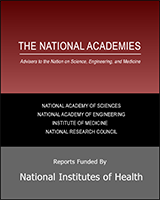From: Immunization Safety Review: Vaccines and Autism

NCBI Bookshelf. A service of the National Library of Medicine, National Institutes of Health.
| Vaccines | 1999 Maximum Mercury Dose (μg) | 2004 Maximum Mercury Dose (μg) |
|---|---|---|
| 3 doses of DTaP† | 75.0 | <0.9 |
| 3 doses of Hep B‡ | 37.5 | <1.5 |
| 3 doses of HIB | 75.0 | 0 |
| TOTAL | 187.5 | <2.4 |
| Estimated Exposure to Mercury from Vaccines in 1999 and in 2004 (< 2 years of age) | ||
| Vaccines | 1999 Maximum Mercury Dose (μg) | 2004 Maximum Mercury Dose (μg) |
| 4 doses of DTaP† | 100 | <1.2 |
| 3 doses of Hep B | 37.5 | <1.5 |
| 4 doses of HIB | 100 | 0 |
| 3 doses of influenza* | **[37.5] | **37.5 |
| TOTAL | 237.5 [275] | < 40.2 |
A trace amount of mercury is present in Tripedia thus, the maximum mercury dose following three doses of Tripedia is <0.9 μg, the maximum mercury dose following four doses of Tripedia is <1.2 μg.
A trace amount of mercury is present in EngerixB; thus, the maximum mercury dose following three doses of EngerixB is <1.5 μg.
Children less than 9 years of age receiving the influenza vaccine for the first time are recommended to receive two doses of the vaccine, at least one month apart (CDC, 1999b). A child less than 2 years of age may receive three doses of the influenza vaccine. This could occur if the child turned 6 months of age in October, during the beginning of the influenza season, receives one dose of influenza vaccine then, and subsequently at age 7 months. The child could receive the third dose of influenza vaccine during the following October, at age 18 months.
ACIP recommended recently that all children 6 to 23 months of age receive the influenza vaccine (CDC, 2004). Previously, the ACIP encouraged influenza vaccination in this age group and recommended vaccination in children with certain risk factors (CDC, 2003a). The number in brackets in the 1999 column reflects the amount of mercury if children received the influenza vaccine.
SOURCE: Joint statement of the American Academy of Pediatrics (AAP) and the United States Public Health Service (USPHS), 1999; FDA 2001, 2004e.
From: Immunization Safety Review: Vaccines and Autism

NCBI Bookshelf. A service of the National Library of Medicine, National Institutes of Health.